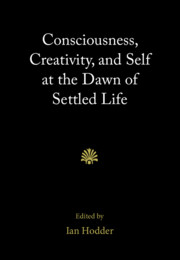Book contents
- Consciousness, Creativity, and Self at the Dawn of Settled Life
- Consciousness, Creativity, and Self at the Dawn of Settled Life
- Copyright page
- Contents
- Contributors
- Acknowledgments
- Part I Introduction to the Themes, Site, and Region
- Part II Higher Levels of Consciousness
- 3 When Time Begins to Matter
- 4 Cognitive Change and Material Culture
- 5 Conscious Tokens?
- 6 Brick Sizes and Architectural Regularities at Neolithic Çatalhöyük
- Part III Greater Innovation and Creativity
- Part IV Greater Awareness of an Integrated Personal Self
- Notes
- Index
- References
6 - Brick Sizes and Architectural Regularities at Neolithic Çatalhöyük
from Part II - Higher Levels of Consciousness
Published online by Cambridge University Press: 22 February 2020
- Consciousness, Creativity, and Self at the Dawn of Settled Life
- Consciousness, Creativity, and Self at the Dawn of Settled Life
- Copyright page
- Contents
- Contributors
- Acknowledgments
- Part I Introduction to the Themes, Site, and Region
- Part II Higher Levels of Consciousness
- 3 When Time Begins to Matter
- 4 Cognitive Change and Material Culture
- 5 Conscious Tokens?
- 6 Brick Sizes and Architectural Regularities at Neolithic Çatalhöyük
- Part III Greater Innovation and Creativity
- Part IV Greater Awareness of an Integrated Personal Self
- Notes
- Index
- References
Summary
Central Anatolian Çatalhöyük (ca. 7,100–5,950 cal. BCE) is a rare example of a well-preserved Neolithic settlement that is considered one of the key sites for understanding changes in prehistoric ways of life, from the domestication of cattle and the adoption of a settled way of living, to the invention of pottery and metallurgy, and the appearance of long-distance trade (Hodder 2007; Hodder & Farid 2014). It is also an optimal site for the study of mudbrick architecture because of its continual habitation sequence, as well as the extensive exposure of architectural remains. This deeply stratified sequence, with houses built one upon another, provides a unique opportunity to document temporal changes both within and between the houses through all the main occupational phases spanning in total over 1,100 years.
- Type
- Chapter
- Information
- Consciousness, Creativity, and Self at the Dawn of Settled Life , pp. 133 - 150Publisher: Cambridge University PressPrint publication year: 2020
References
- 1
- Cited by



